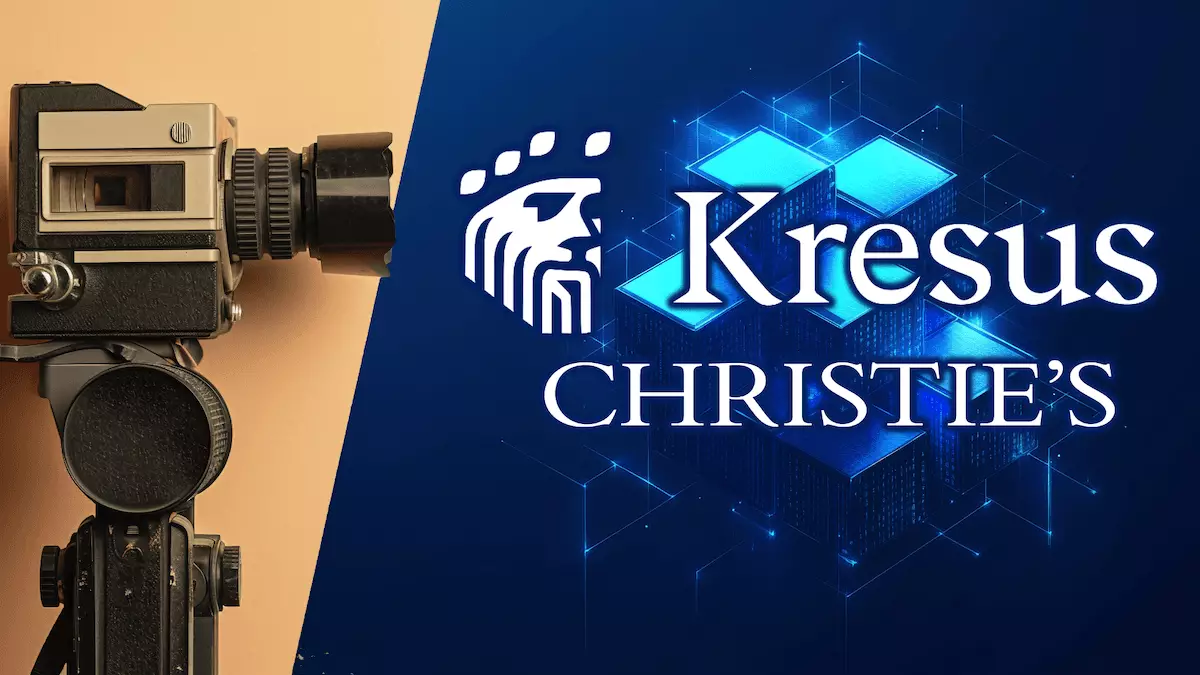The art world, with its intricate tapestry of history and personal expression, has long been characterized by the physicality of ownership. Yet, as the realms of technology and art increasingly intertwine, the approach to ownership verification is undergoing a profound metamorphosis. A case in point is the recent collaboration between Kresus, a leading cryptocurrency wallet service, and Christie’s, a premier auction house known for its historical significance and prestige. This initiative not only redefines how collectors authenticate and maintain their assets but also symbolizes a larger trend towards embracing innovation in a traditionally conservative space.
The pilot program slated for October 2 at Christie’s Rockefeller Center, titled “An Eye Towards the Real: Photographs from the Collection of Ambassador Trevor Traina,” serves as a pivotal example of this transformation. Kresus will distribute blockchain-based certificates of ownership for over 130 art lots during this auction. Each of these lots will be accompanied by a unique digital certificate designed to ensure a secure and verifiable ownership record. The certificates will be stored on the Base blockchain, a technology known for its robustness and security.
In an interview, Trevor Traina, the visionary behind Kresus, articulated the cumbersome nature of traditional art ownership documentation. “As an art collector, I face challenges in managing provenance and essential documents often hidden away in file cabinets,” he noted. This sentiment emphasizes the burdens that collectors bear, often relying on outdated methods that leave room for error and fraud.
Ambassador Traina’s curated collection showcases mid-century photography, highlighting the contributions of female artists and advancements in color photography. The upcoming auction is poised to feature iconic works from celebrated artists such as Diane Arbus and Cindy Sherman. This focus on both historical relevance and contemporary significance underscores the campaign’s commitment to bridging the gap between time-honored practices and modern methodologies.
The integration of blockchain technology within this initiative aims to streamline the often laborious process of proving ownership. By aligning physical art pieces with digital certificates, Kresus and Christie’s not only enhance transparency but also invite a newfound confidence for collectors. This direction holds the promise of fostering an environment where art transactions are no longer shrouded in uncertainty or doubt.
Christie’s collaborates with Kresus, seeing this venture as an extension of its dedication to authenticity in the art market. Nicole Sales Giles, the Vice President and Director of Digital Art Sales at Christie’s, expressed optimism about the partnership, labeling the initiative as a natural evolution aimed at enhancing transparency. By adopting blockchain technology, the auction house not only upholds its longstanding commitment to integrity but also positions itself as a pioneer in the evolving landscape of art transactions.
The ramifications of introducing blockchain certificates are profound. As collectors increasingly seek technological solutions to catalog and verify their collections, this pilot program could set a precedent. Should it prove successful, it might open doors for other auction houses and galleries to explore similar avenues, challenging the status quo.
As the art world continues to grapple with the necessary adaptations to stay relevant in the digital age, Kresus and Christie’s collaboration serves as a beacon of innovation. This partnership points to a future where the intersection of art and technology could redefine ownership and valuation, thereby enhancing the collector’s experience. It is an encouraging sign that, even in an industry steeped in tradition, there is room for change—if not an outright revolution.
The implications of this initiative are likely to ripple throughout the art community, forging new pathways for collectors and creators alike. The fusion of blockchain technology with the fine arts holds the potential to demystify the art market, paving the way for a more organized, transparent, and secure approach to art ownership. Whether this will transform the fabric of art collecting remains to be seen, but the steps being taken by Kresus and Christie’s certainly lays the groundwork for a more digitally savvy future.
















Leave a Reply